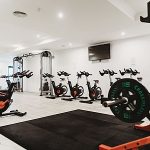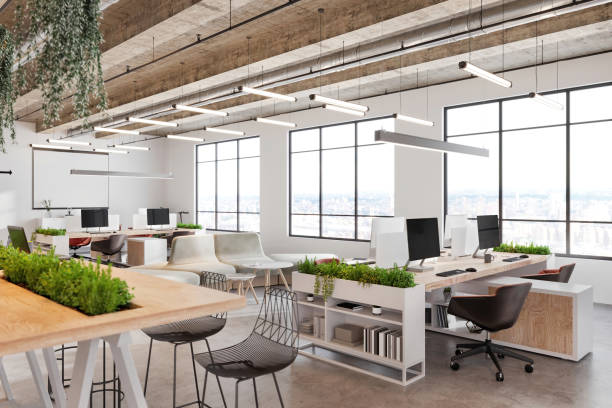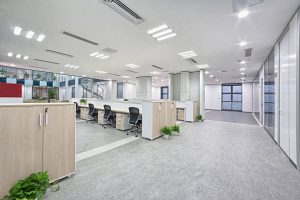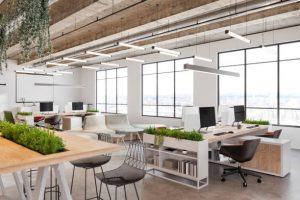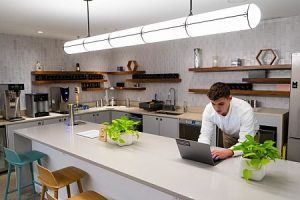In today’s ever-evolving workplace, office decor has transcended mere aesthetics to become a strategic tool that influences productivity, employee well-being, and corporate identity. Modern offices are no longer confined to sterile cubicles; they now serve as creative hubs that inspire collaboration, reflect company values, and cater to the diverse needs of today’s workforce. In my opinion, a well-designed office not only uplifts the mood of its occupants but also drives business success.
The Role of Office Decor in Shaping Work Culture
Office decor plays a pivotal role in setting the tone for a company’s culture. The environment where employees work can impact motivation, creativity, and overall job satisfaction. For instance, a space that incorporates elements of nature—such as indoor plants, natural light, and earthy color schemes—can reduce stress and boost morale. This biophilic approach, which brings the outdoors inside, has been shown to improve cognitive function and enhance overall well-being
. A welcoming, vibrant workspace sends a strong message: the company values its people, fostering an atmosphere where innovation and collaboration thrive.
Moreover, the layout and decor of an office can reinforce a company’s brand identity. When decor elements are thoughtfully curated, they mirror the values and personality of the organization. Whether it’s minimalist modernism, industrial chic, or warm, traditional design, the visual environment helps shape how employees and visitors perceive the company. In my view, aligning office decor with corporate culture is a subtle yet powerful way to reinforce brand ethos and create a sense of belonging among employees.
Key Trends in Modern Office Decor
Several trends have emerged in office decor that underscore the need for flexibility, sustainability, and personalization:
- Flexible and Adaptive Spaces: The modern office is increasingly designed to be flexible. As hybrid work models gain traction, spaces are reconfigured to support both collaborative and individual work. Movable partitions, adjustable furniture, and multipurpose zones allow companies to easily adapt to changing needs. This flexibility is essential in creating an environment that can evolve with the organization’s requirements
.
- Biophilic Design: Incorporating natural elements into the workplace is more than just a trend—it’s a proven strategy to improve well-being. Living walls, indoor gardens, natural textures, and ample natural light are all features that help create a calming, invigorating environment. These design choices not only enhance the visual appeal of the space but also contribute to air quality and employee health.
- Technology Integration: Office decor today often includes smart technology that enhances both functionality and efficiency. Digital displays, interactive whiteboards, and smart lighting systems blend seamlessly with decor elements to create a high-tech yet visually appealing workspace. This integration enables real-time adjustments to lighting and temperature, ensuring optimal comfort and energy efficiency.
- Sustainable and Eco-Friendly Materials: With environmental concerns at the forefront, sustainable decor has become increasingly important. Eco-friendly furniture made from recycled materials, sustainably sourced wood, and low-VOC paints are gaining popularity. Such choices not only reduce the environmental footprint but also send a message about the company’s commitment to sustainability. In my opinion, a sustainable office decor strategy is not only responsible but also economically wise in the long run.
- Vintage and Artisanal Influences: There is a growing appreciation for decor that reflects timeless craftsmanship and retro aesthetics. Elements such as handcrafted furniture, vintage accents, and artisanal décor add character and warmth to modern offices. These touches offer a counterbalance to the often sterile digital environment, providing a sense of heritage and permanence
.
Balancing Functionality and Personal Expression
While functionality is paramount, office decor must also allow for personal expression. Employees today value spaces that reflect their individuality and creativity. Personal touches—such as curated artwork, flexible seating arrangements, or personalized desk accessories—help create an environment where staff feel at home. This blend of corporate consistency and personal freedom is essential for fostering a dynamic and inclusive workspace. In my view, the most successful office decor strikes a balance between a unified company image and the diverse personalities of its workforce.
Effective decor should also prioritize ergonomic design. Comfortable seating, proper lighting, and thoughtful spatial planning contribute directly to employee productivity. Ergonomic furniture that supports proper posture and minimizes fatigue is not a luxury—it’s a necessity for any modern office. The arrangement of furniture and decor should facilitate easy movement, clear sightlines, and collaborative interactions without compromising individual comfort.
The Impact of Office Decor on Productivity
Investing in high-quality office decor is an investment in the workforce’s efficiency. A well-decorated space can spark creativity, reduce stress, and promote faster decision-making. Studies have shown that environments that are visually appealing and functionally sound can lead to higher levels of employee engagement. When workers are surrounded by inspiring decor, they are more likely to take pride in their workplace, which in turn boosts morale and productivity. From my perspective, the tangible benefits of thoughtful office decor extend far beyond aesthetics—they directly contribute to a healthier, more productive work environment.
Future Directions in Office Decor
Looking ahead, the evolution of office decor is likely to continue as technology advances and work culture shifts. We can expect more integration of augmented reality (AR) tools that allow for dynamic decor changes based on user preferences, as well as innovations in sustainable materials that further reduce environmental impact. As remote and hybrid work become even more prevalent, decor will increasingly cater to both centralized offices and decentralized work hubs, ensuring a cohesive yet adaptable work experience across different locations.
Conclusion
In conclusion, modern office decor is an essential element of the contemporary workplace. It blends functionality with aesthetics, reflects corporate identity, and supports employee well-being. From flexible layouts and biophilic design to sustainable materials and personalized touches, office decor is evolving to meet the needs of today’s dynamic work environment. In my opinion, companies that invest in thoughtful, innovative decor not only enhance productivity but also create a more engaging, supportive, and future-proof workspace. The office of the future is one where every element—down to the smallest decorative detail—plays a strategic role in driving success.


